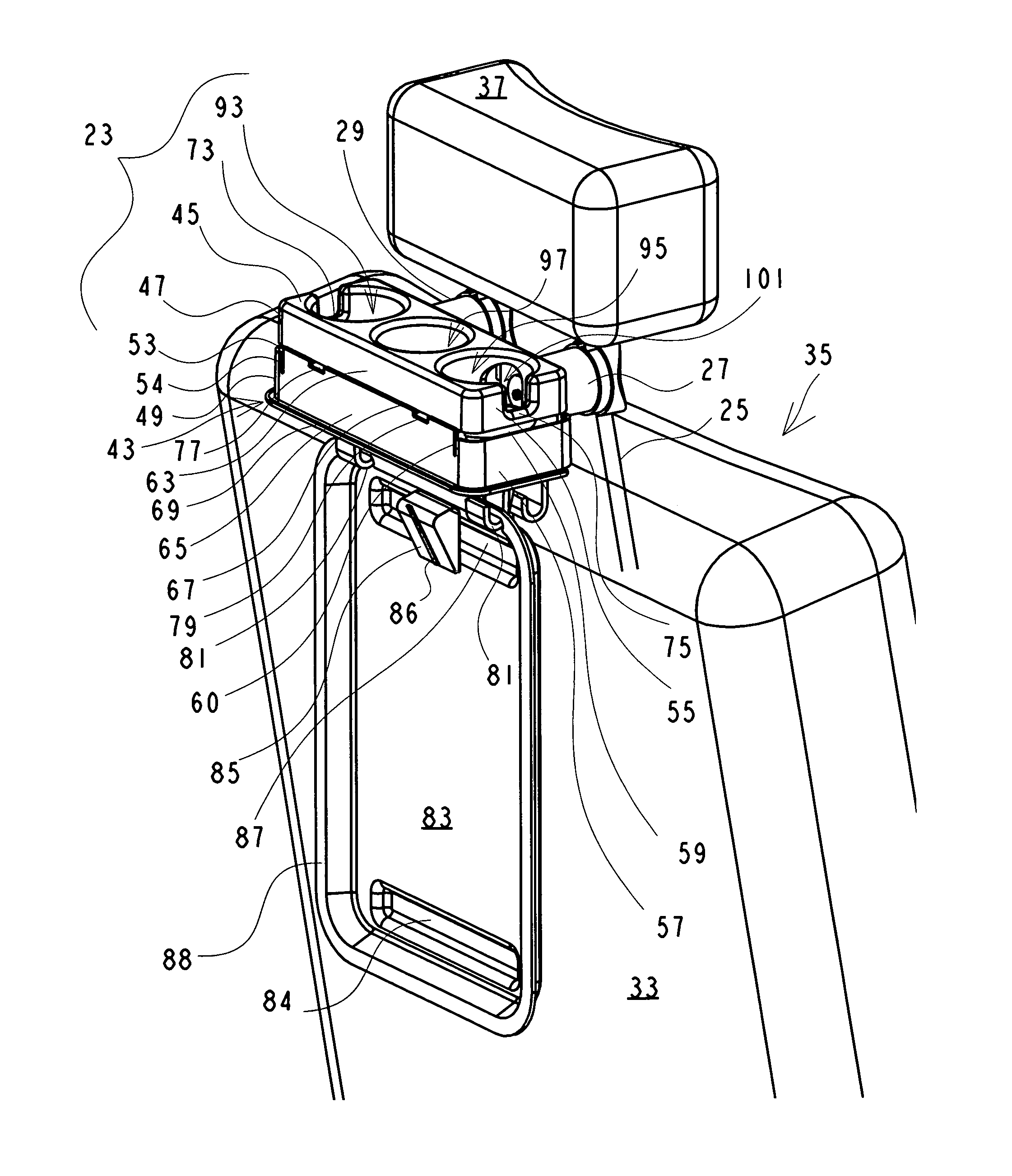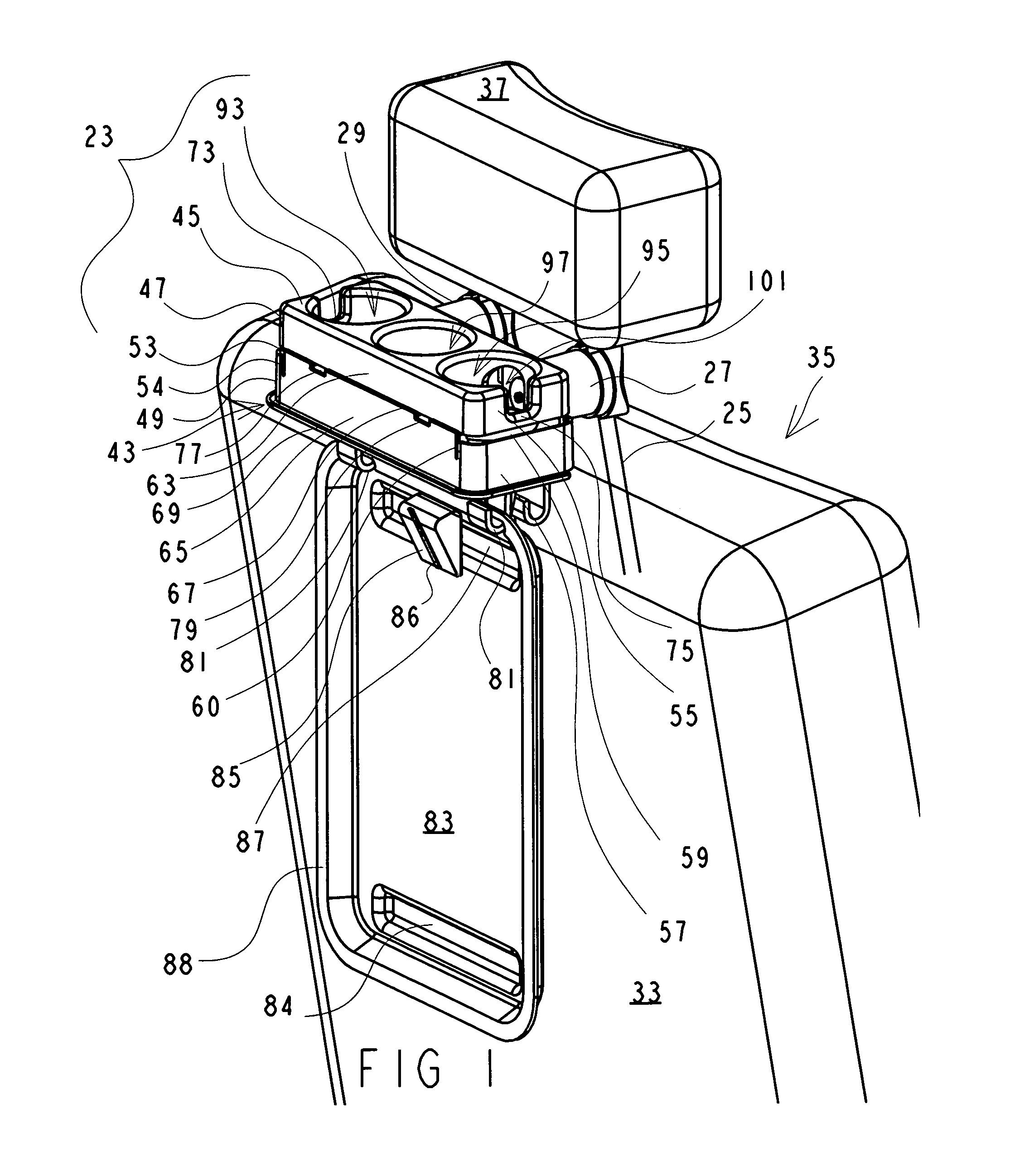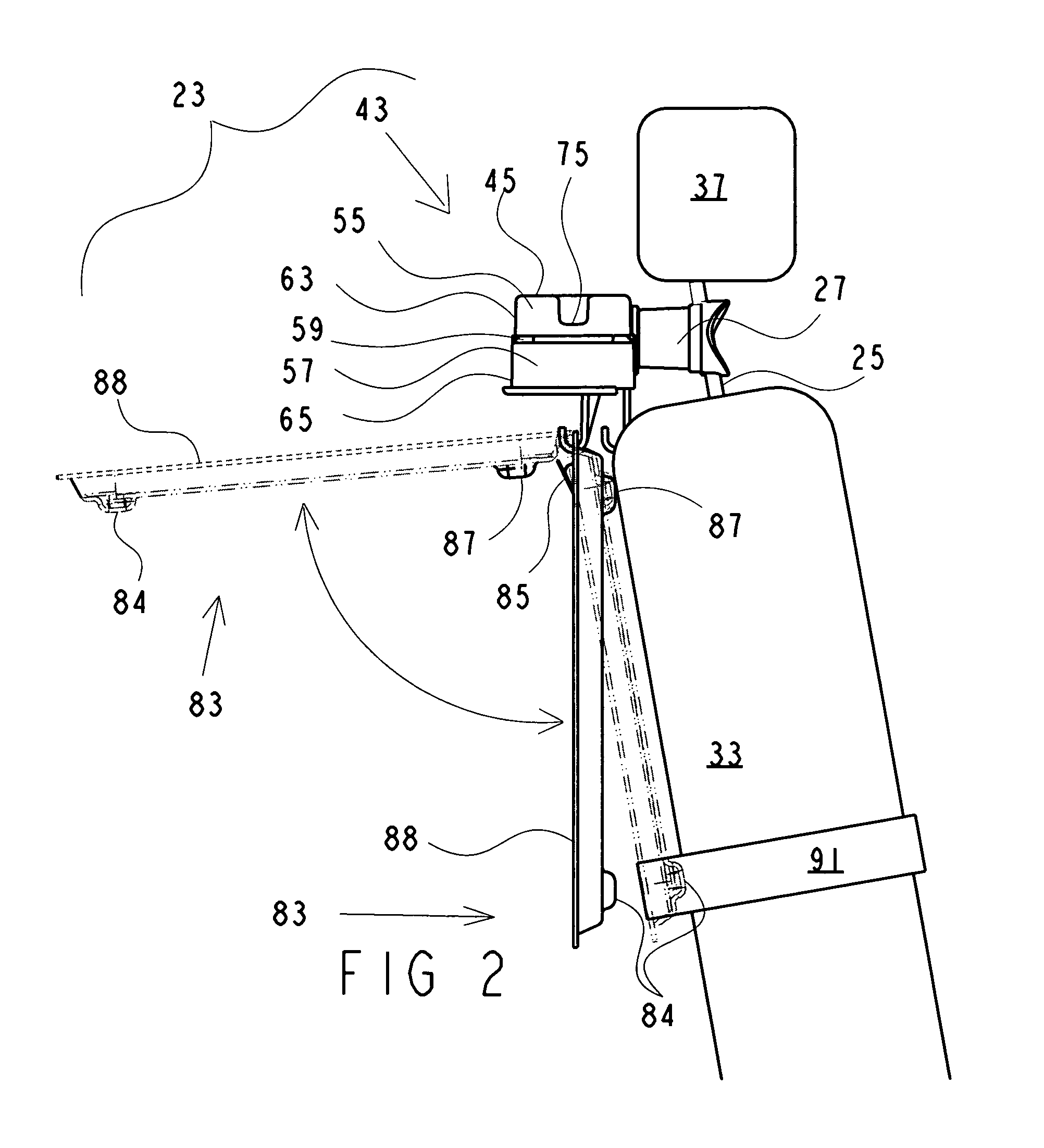Automobile caddy
a technology for automobiles and caddies, which is applied in the direction of washstands, chairs, lighting supports, etc., can solve the problems of affecting the safety of passengers, etc., and achieves the effect of high stability and a safe holding of items
- Summary
- Abstract
- Description
- Claims
- Application Information
AI Technical Summary
Benefits of technology
Problems solved by technology
Method used
Image
Examples
Embodiment Construction
[0035]The invention, its configuration, construction, and operation will be best further described in the following detailed description, taken in conjunction with the accompanying drawings in which:
[0036]FIG. 1 is a perspective view of the auto caddy 23 of the present invention which illustrates the auto caddy 23 attached to a pair of headrest seat posts 25 by a first attachment member 27 and a second attachment member 29. Vehicle seat back 33 and headrest 37 are also shown in FIG. 1 for environmental completeness. Auto caddy 23 may include a housing 43 adjacent attachment members 27 and 29. Housing 43 may include a top surface 45, a first upper side wall 47, a first lower side wall 49, a first side slot 53 extending between first upper and lower side walls 47 and 49 and including a first front terminus 54, a second upper side wall 55, a second lower side wall 57, a second side slot 59 extending between second upper and lower side walls 55 and 57 and including a second front termin...
PUM
 Login to View More
Login to View More Abstract
Description
Claims
Application Information
 Login to View More
Login to View More - R&D
- Intellectual Property
- Life Sciences
- Materials
- Tech Scout
- Unparalleled Data Quality
- Higher Quality Content
- 60% Fewer Hallucinations
Browse by: Latest US Patents, China's latest patents, Technical Efficacy Thesaurus, Application Domain, Technology Topic, Popular Technical Reports.
© 2025 PatSnap. All rights reserved.Legal|Privacy policy|Modern Slavery Act Transparency Statement|Sitemap|About US| Contact US: help@patsnap.com



